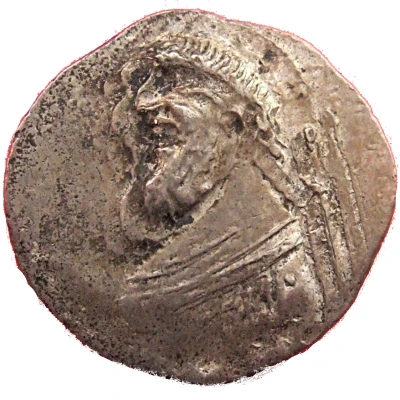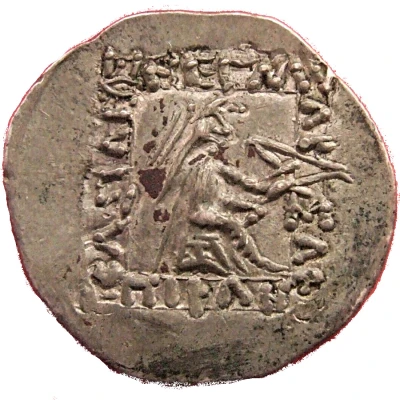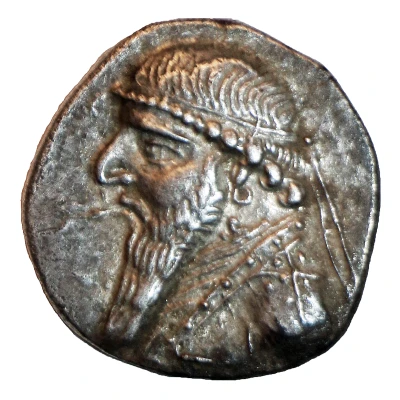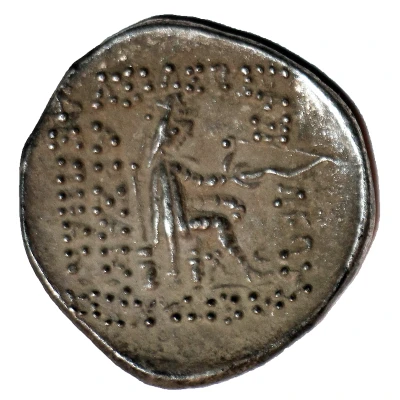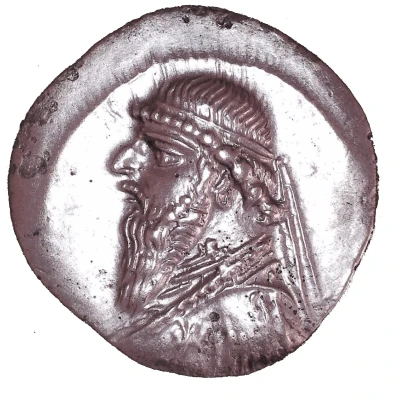
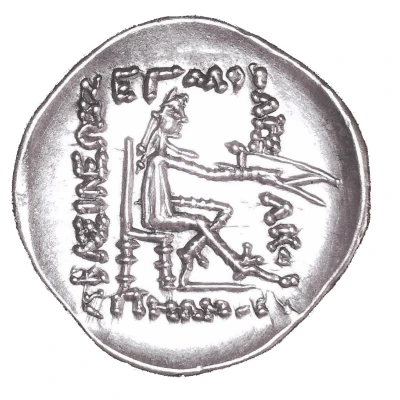

© David E. Anderson
Drachm - Mithridates II 123 BC - 88 BC
| Silver | 4.16 g | 21 mm |
| Issuer | Parthian Empire (Parthian Empire (247 BC - 224 AD)) |
|---|---|
| King | Mithridates II (123 BC - 88 BC) |
| Type | Standard circulation coin |
| Years | 123 BC - 88 BC |
| Value | Drachm (1) |
| Currency | Drachm (247 BC-224 AD) |
| Composition | Silver |
| Weight | 4.16 g |
| Diameter | 21 mm |
| Thickness | 2 mm |
| Shape | Round (irregular) |
| Technique | Hammered |
| Orientation | Medal alignment ↑↑ |
| Demonetized | Yes |
| Updated | 2024-10-10 |
| Numista | N#239394 |
|---|---|
| Rarity index | 93% |
Reverse
Beardless archer wearing bashlyk and cloak seated right on throne, holding bow and arrow in right hand; no border; square four-line Greek inscription.
Script: Greek
Lettering: ΒΑΣΙΛΕΩΣ ΜΕΓΑΛΟΥ ΑΡΣΑΚΟΥ ΕΠΙΦΑΝΟΥΣ
Comment
Uncle of Phraates II, Artabanus I (r. c. 127-124 BCE) would successfully put down revolts in Elam, Characene, and Babylon, but his reign was cut short when he was killed in battle against the Yuezhi in the east. His son, Mithridates II (r. 124-88 BCE) would take over and become Parthia’s greatest ruler. Mithridates would not only strengthen Parthia’s hand in Elam, Characene, Mesopotamia, and Bactria but he also added Albania and Armenia and captured the Syrian city of Dura-Europas in the west. With frontiers now stretching between the Mediterranean Sea and China, Parthia became a geographical juggernaut and true superpower. Source: ancient.eu/Parthia_(Empire)/Mithradates II was the eighth Parthian king. One of the greatest Parthian kings, he defeated all Seleucid attempts to reclaim their Eastern territories and made Parthia into a formidable, unified empire. He made contact with Rome and introduced new titles and designs on his extensive coinage. He adopted the title Epiphanes, "god manifest". Late in his reign, Mithradates II exerted his influence in Greater Armenia where he took as hostage the prince who was to become Tigranes the Great of Armenia. Source: http://www.parthia.com/mithradates2.htm
Interesting fact
The Parthian Empire, which issued the Drachm coin with Mithridates II's image, was known for its extensive trade networks and strong diplomatic relations with other powerful empires of the time, including the Roman Empire. The Parthian Empire's influence on trade and commerce was so significant that it's said that the Silk Road, a major trade route connecting the East and West, was established during their rule.
